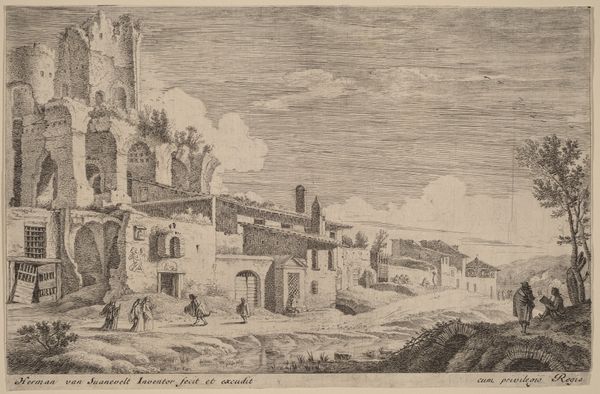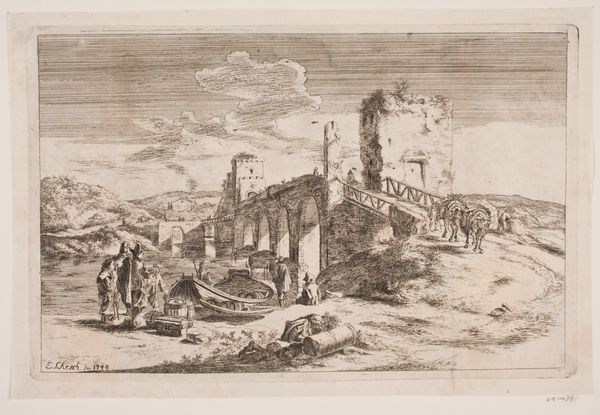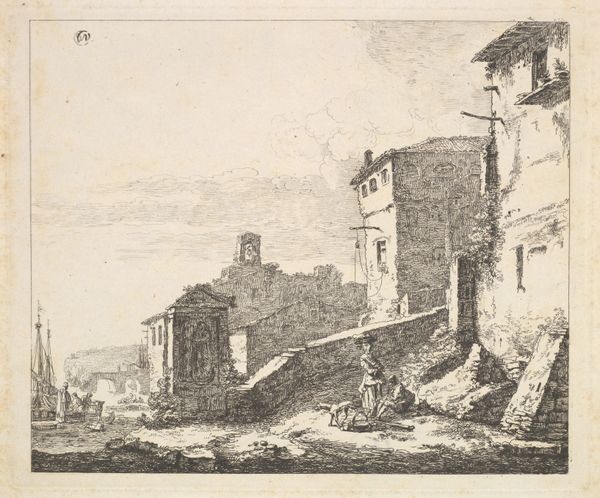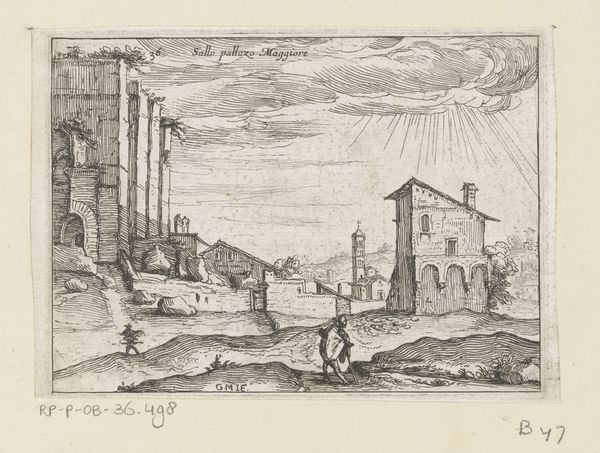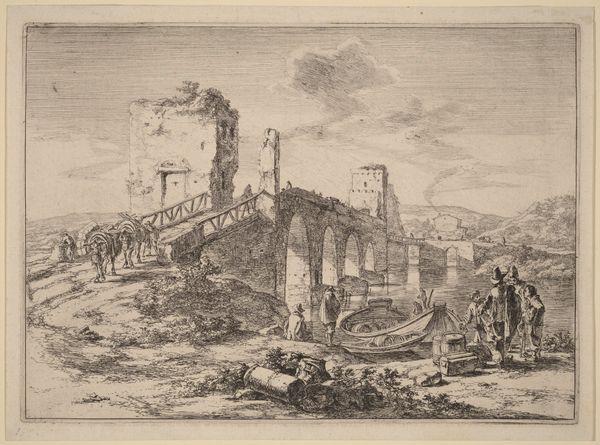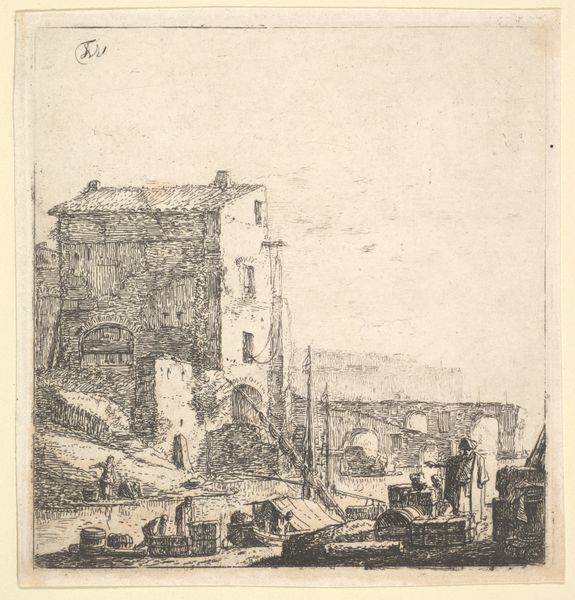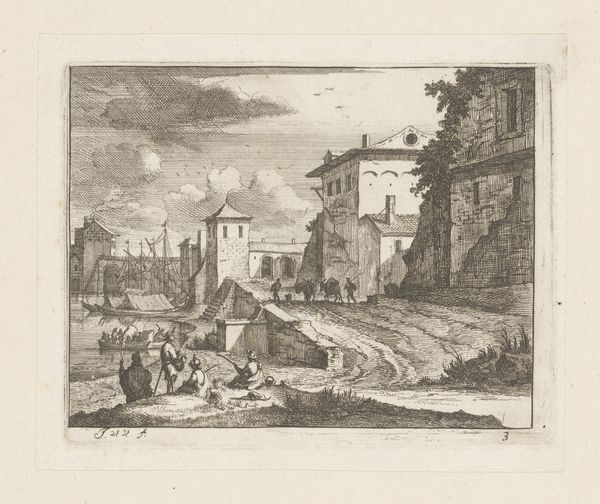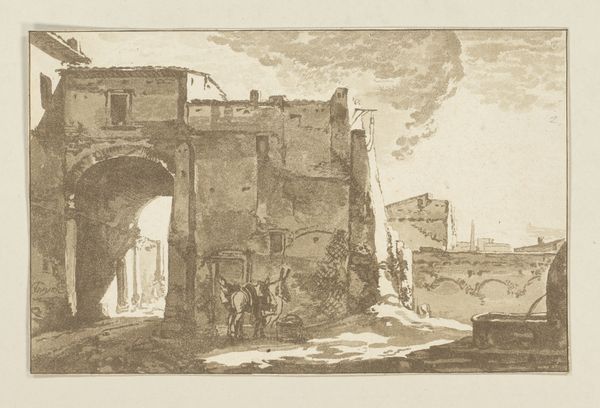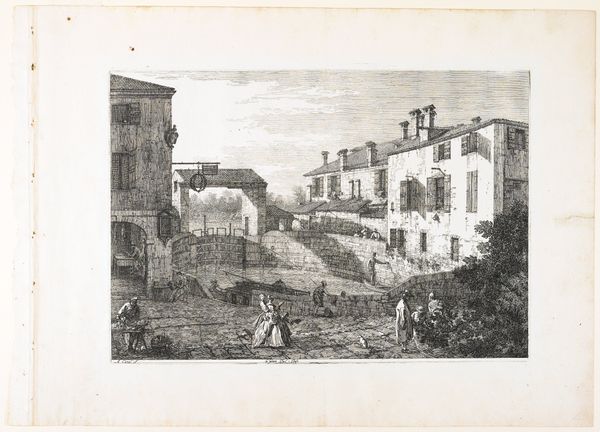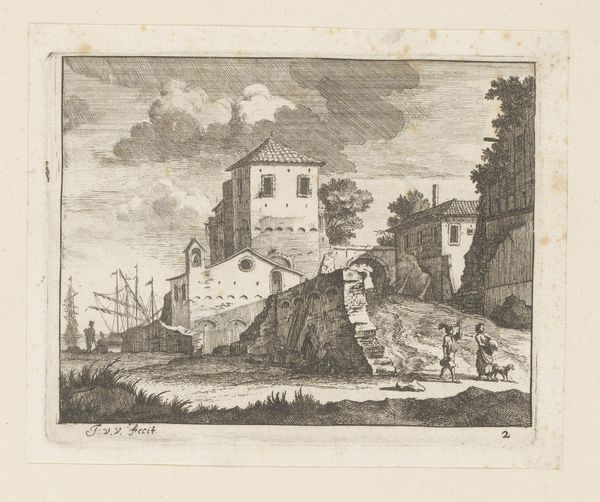
print, etching
#
baroque
# print
#
etching
#
landscape
#
etching
#
cityscape
Dimensions: height 145 mm, width 169 mm
Copyright: Rijks Museum: Open Domain
Editor: So, here we have "Gezicht op een watermolen," or "View of a Watermill," an etching that the Rijksmuseum dates vaguely to between 1626 and 1727, by an anonymous artist. It's so detailed, and really draws my eye to the hustle and bustle of the people in the foreground. What’s your take on this piece? Curator: What immediately strikes me is the way this etching serves as a document of its time, perhaps unintentionally. The cityscape isn't just a picturesque backdrop; it's evidence. We see the infrastructure – the watermill itself, but also the port facilities, the bridge, hinting at trade routes and economic activity. Who has access to these areas, and who is allowed to be portrayed? Editor: That’s an interesting point. It feels like we’re getting a glimpse into a specific moment in this community’s daily life, a record. Curator: Precisely. And think about the “anonymous” attribution. How does that impact its value as a historical source? Were artists considered craftsmen at this time, and if so, what do these decisions communicate? Editor: I guess I hadn’t thought about that. The anonymity kind of flattens it. If we knew who made it, we could attribute motives or meanings to certain compositional choices. Curator: Indeed, and that opens questions about patronage, about who commissions these works, and why. Was this intended for public display, or a private collection? Editor: It’s crazy how much one little piece can reveal when you start digging into its background. Curator: That's the power of art history! Looking beyond the aesthetic to understand the cultural and socio-political forces at play. This wasn't just about creating a pretty picture; it was about documenting – and perhaps even shaping – perceptions of the world. Editor: Thanks! I'll definitely approach art with a broader historical lens now.
Comments
No comments
Be the first to comment and join the conversation on the ultimate creative platform.
